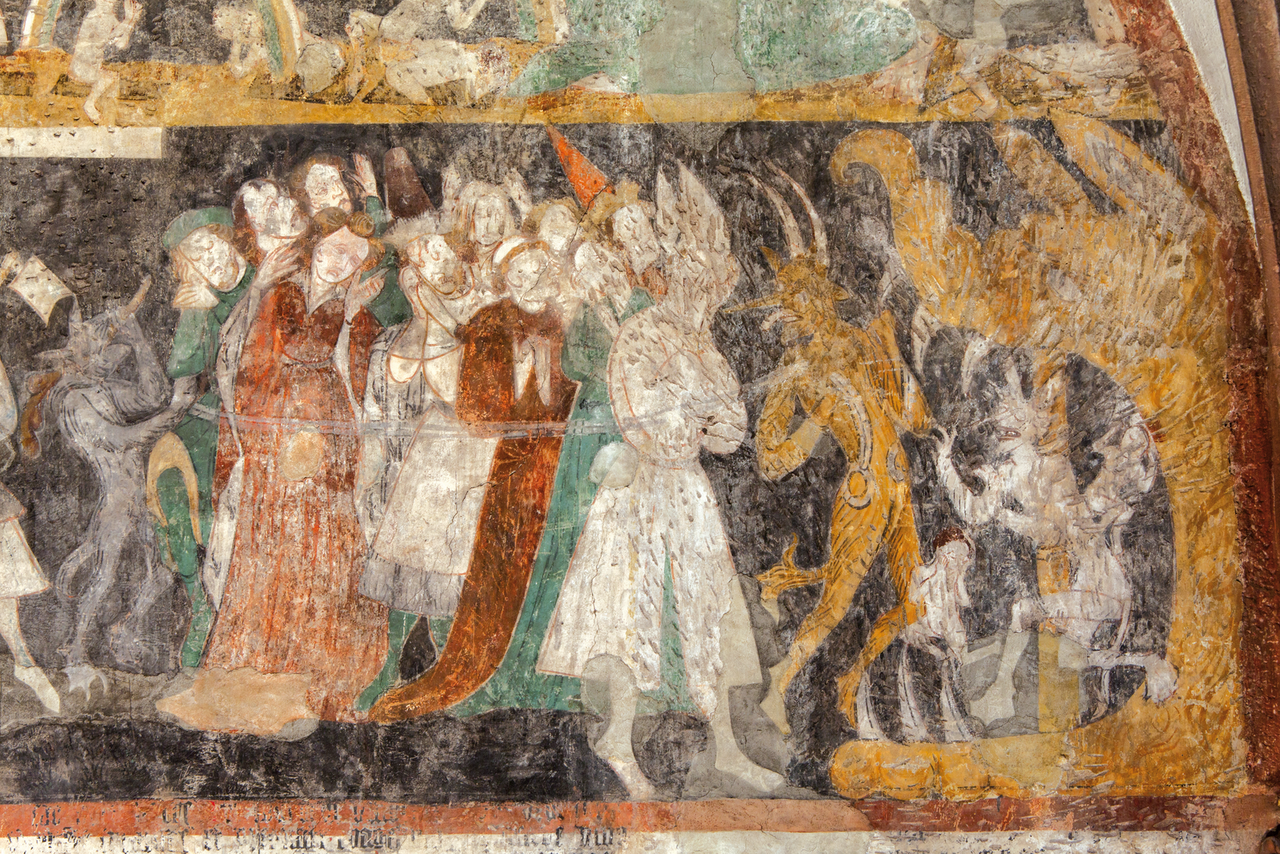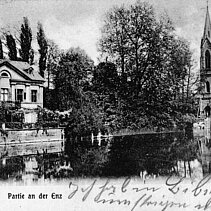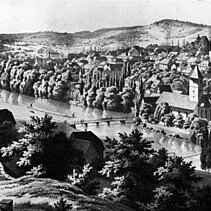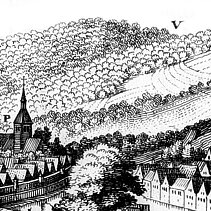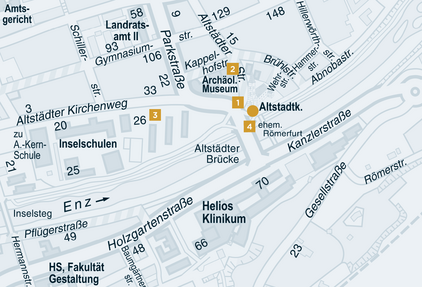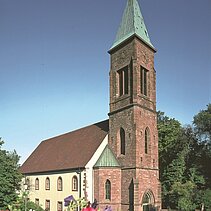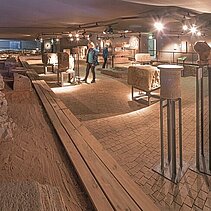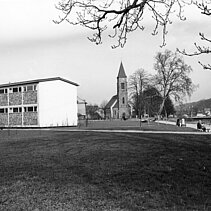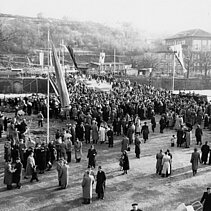Altstädter Brücke Before 1945
Places and Buildings Before 1945
[1] Around 1900
Around 1820, the cloth manufacturer Samuel Finkenstein let build for himself an elegant villa in neo-classical style near "Altstädter Brücke". Around this estate a park-like area formed the "Insel" bathed in the "Enz" and several branches of the "Mühlbach". The latter supplied operating power for the spinning- and shaping machines of the cloth company.
[2] 1863
The "Altstädter Brücke" is witnessed from 1383 on above the passage through the Enz that was already used in Roman times. This wooden bridge was destroyed again and again by floodwater and had to be renewed. In 1880, the simple wooden bridge was replaced by an iron bridge from the Brothers Benckiser from Pforzheim.
[3] 1643
The origins of Pforzheim lay in the "Alte Stadt". At the Enz-crossing of the military street from Strasbourg to Bad Cannstatt, the Romans founded the town PORTUS (lat. Port, wharf) in the year 90 anno Domini. On Roman ruins around the monastery garden of Hirsau and the "Martinskirche" todays "Altstadtkirche" developed in the Early Middle Ages as market settlement which later on was called "Alte Stadt" and became suburb.
[4] Around 1130
In Romanic times the "Altstadtkirche" belonged to the zone of influence of the Monastery Hirsau that operated a monastery garden in the "Alte Stadt". Around 1130, a basilica was established probably by builders from Hirsau from which the unique tympanum of the Roman portal is still preserved. The relief shows Christ in archaic representation in the centre, surrounded by symbols of heavenly grace, salvation and resurrection.
Altstädter Brücke After 1945
Places and Buildings After 1945
[1] 2016
The protestant "Altstadtkirche St. Martin" is the oldest parish church of Pforzheim. Dig discoveries showed that it was created in Frankish-Carolingian times (7th to 9th century). The church holds concrete relicts from older construction phases: a Romanic tympanum and Late-Gothic wall paintings in the choir. Todays appearance is coined by the embedding in the historic churchyard and the reconstruction of church hall and tower after war damage in the years 1949 to 1953.
[2] 2016
The Museum of Archaeology in Pforzheim developed in 1995 as a consequence of archaeological digs on the "Kappelhofplatz". The walkable excavation area gives an overview of 2000 years of settlement history in Pforzheim from the ancient Roman town PORTUS on up to the presence. The excavation area is connected to an important collection of Roman stone monuments.
[3] 1950s
From the year 1953 on, on the area of the former "Insel", a pavilion school called "Inselschule" was built according to plans of the municipal building department. This school matched the urbanistic concept of a decentralized town and counts as exemplar of modern school design in the 1950s. The school pavilions are connected to each other by open hypostatic corridors.
[4] 1954
On 13th February 1954, the reconstructed "Altstädter Brücke" was inaugurated. This construction replaced a narrower predecessor that was destroyed in 1945 in the acts of war. Already in Roman times and in the Middle Age here existed an important river crossing.

